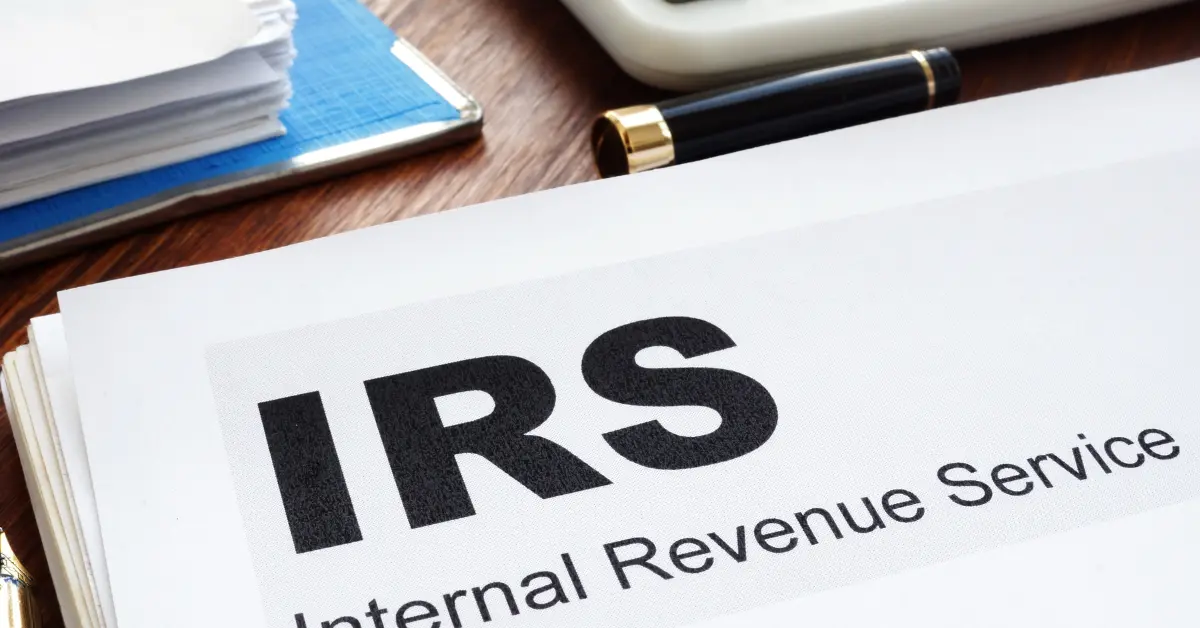If you’re involved in foreign partnerships, you’ve likely heard of Form 8865 and its filing requirements. This form is essential for U.S. persons with certain interests in foreign partnerships, and understanding the 8865 filing requirements is crucial to staying compliant with the IRS.
But with the complexities of international tax laws, figuring out if and when you need to file Form 8865 can be a daunting task. Even seasoned tax professionals can find themselves scratching their heads when it comes to these requirements.
Mastering Form 8865 filing requirements can be a daunting task, but with this comprehensive guide, you’ll be well-equipped to tackle it head-on, regardless of whether you’re a business owner, investor, or tax preparer.
Key Takeaways:
- Who Must File Form 8865: U.S. persons with control (over 50% interest), significant interest (10% or more), or property contributions to a foreign partnership must file.
- Detailed Reporting Requirements: Form 8865 requires comprehensive details about the foreign partnership’s financials, varying by filer category.
- Deadlines and Penalties: The form is due with the personal tax return (April 15th/October 15th). Missing the deadline can incur hefty penalties.
- Consequences of Non-Compliance: Non-filing can lead to $10,000+ penalties and an extended statute of limitations on the tax return.
- Best Compliance Practices: Keep accurate records, adhere to deadlines, and consult a tax professional to avoid errors and penalties.
Understanding IRS Form 8865 Filing Requirements
If you’re involved in a foreign partnership, you know the IRS closely monitors your international tax obligations. Form 8865 is the key filing requirement for U.S. persons with certain ownership interests or transactions with foreign partnerships.
I’ve seen firsthand how complex the 8865 filing requirements can be. But don’t worry, I’m here to break it down for you.
Who needs to file IRS Form 8865
You’ll need to file Form 8865 if you’re a U.S. person who:
- Controls a foreign partnership (owns more than 50% direct or indirect interest).
- Holds a significant interest (10% or more direct or indirect ownership) in a foreign partnership controlled by U.S. persons.
- Contributes property to a foreign partnership in exchange for an interest.
The type of filing requirements you have depends on your category of ownership or involvement. Understanding the filing requirements for your specific situation is crucial to staying compliant with international tax laws.
Key reporting requirements
Form 8865 isn’t just a simple checkbox. It requires detailed info about the foreign partnership, like:
- Income statements.
- Balance sheets.
- Capital accounts.
- Transactions between the partnership and partners.
The exact reporting depends on whether you’re a Category 1, 2, 3, or 4 filer. The higher your level of ownership or control, the more extensive the requirements.
Filing deadline
Mark your calendar. Form 8865 is due when your personal income tax return is due. For most folks, that’s April 15th (or October 15th with an extension).
Miss the deadline? Expect some hefty penalties from the IRS. They don’t mess around when it comes to international tax reporting.
Complexities and Filing Obligations of Form 8865
Now that you know the basics of the 8865 filing requirements, let’s dive into the nitty-gritty of the different filing categories. This is where things get interesting.
Category 1: Controllers
If you control a foreign partnership, congrats. You’re a Category 1 filer with the most work to do. You’ll need to fill out the whole enchilada of Form 8865.
We’re talking about the full financial statements, capital accounts, and transactions. It’s a beast, but it’s doable.
In my experience, the key is staying organized and keeping meticulous records throughout the tax year. Seeking guidance from a tax professional from Dimov Tax experienced in foreign partnerships can help navigate the complexities.
Category 2: Significant interest holders
Category 2 filers own at least 10% of a foreign partnership that’s controlled by U.S. persons. While it’s not as intense as Category 1, you’ve still got some significant reporting to do.
You’ll be filling out most of Form 8865, including key financial info and transactions. It’s critical to understand the constructive ownership rules that may bump you into this category.
Category 3: Contributors
Did you contribute property to a foreign partnership this year? Then you might be a Category 3 filer.
The focus here is on reporting the contributed property and your basis in the partnership interest right after the contribution. There are thresholds to meet before you have a Category 3 filing requirement.
But if you hit them, get ready to disclose the details on Form 8865. The value of the property contributed is a key factor in determining your reporting obligations.
Category 4: Reportable events
Last but not least, we’ve got the Category 4 filers. You’ll fall into this group if you have certain “reportable events” like:
- Acquisitions.
- Dispositions.
- Changes in proportional interests.
If your ownership level in the foreign partnership changes by 10% or more, the IRS wants to know. You’ll report these events on Form 8865, but you’ll only need to fill out certain sections.
The 8865 filing requirements can feel overwhelming, I get it. But as someone who’s been in the international tax trenches, I promise it’s manageable.
The key is understanding your category, staying on top of your records, and not being afraid to get expert help when you need it. With proper planning and attention to detail, you can meet your Form 8865 obligations and avoid costly penalties.
Penalties for Non-Compliance with Form 8865
Listen, I’ve been there. The IRS can be intimidating, especially when it comes to complex forms like the 8865 filing requirements. But trust me, ignoring them is not the answer.
Consequences of not filing
I learned the hard way that the consequences of not filing Form 8865 are no joke. The IRS doesn’t mess around when it comes to foreign partnerships.
If you fail to file or properly report the required information, you could face a hefty $10,000 penalty for each tax year. And if that failure continues for more than 90 days after the IRS notifies you? Brace yourself for additional $10,000 penalties per foreign partnership.
But that’s not all. The statute of limitations on your entire tax return could be extended from the usual 3 years to a whopping 6 years. Trust me, you don’t want the IRS digging that far back into your finances.
How to avoid penalties
So, how do you avoid penalties? It’s simple, but not easy. You need to stay on top of your 8865 filing requirements every single year.
Don’t risk facing Form 8865 filing penalties – meticulously review your partnership agreements to confirm your ownership stakes, capital infusions, and all financial transactions.
Don’t take a gamble on reporting requirements. If you’re unsure, play it safe and get guidance from a qualified tax professional. A little extra help upfront can save you a world of trouble later on.
Seeking professional advice
I’ve lived through the headaches of international partnership reporting, and I can attest that it’s a jungle out there. That’s why I always stress the importance of teaming up with a seasoned tax professional from Dimov Tax to tackle Form 8865 compliance.
A savvy advisor can be your guiding light when it comes to the complex world of 8865 filing requirements. With their expertise, you’ll avoid costly mistakes and ensure your form is submitted accurately and on time.
Having experts in your corner can be a huge relief, especially when it comes to sticky issues like foreign tax credits and PFIC reporting. Their know-how can save you from a mountain of paperwork and potential IRS headaches down the road.
Best Practices for Form 8865 Compliance
As I reflect on my experience, I’ve come to realize that mastering the 8865 filing requirements boils down to a handful of essential strategies. Allow me to walk you through them.
Maintaining accurate records
I can’t emphasize this enough: accurate and timely completion of Form 8865 hinges on maintaining detailed records. This means keeping tabs on foreign partnership ownership, financial transactions, and any changes in U.S. partners’ interests.
In my experience, the partnerships that stay out of trouble with the IRS are the ones that implement reliable recordkeeping systems from the start. This is especially crucial if you have multiple U.S. owners or complex partnership structures.
Trust me, you don’t want to be scrambling to update ownership percentages, capital accounts, and tax basis at the last minute. Stay on top of your records throughout the year, and filing Form 8865 will be a breeze.
Filing by the deadline
I’ve seen too many taxpayers get hit with penalties because they missed the filing deadline for Form 8865. Don’t let that be you.
Your Form 8865, including extensions, is generally due on the same date as your income tax return. For most partnerships, that means April 15th or October 15th if you filed for an extension.
If you’re worried about meeting the deadline because of missing information or other challenges, consider filing an extension. This will give you some extra breathing room. Remember that an extension to file doesn’t extend your time to pay any tax due.
Working with a tax professional
In my experience, there’s one constant: a skilled tax professional is essential for navigating the complex world of international partnership reporting.
When it comes to the 8865 filing requirements, an experienced advisor can provide invaluable peace of mind. They’ll make sure your form is complete, accurate, and filed on time.
A skilled tax pro is like having a personal guide who can cut through the red tape, help you figure out what you need to file, and suggest ways to simplify your reporting and reduce your tax bill. Plus, if the IRS comes knocking, they’ll be right by your side to help resolve any issues.
So, don’t go it alone. Partner with an experienced advisor to ensure your Form 8865 compliance is airtight. Your future self will thank you.
Final Thoughts
Navigating the complex world of IRS Form 8865 filing requirements can feel like you’re stuck in a never-ending maze of tax jargon and regulations. But don’t let that discourage you from taking control of your international tax obligations.
Meeting your IRS Form 8865 filing requirements demands careful planning and attention to detail. With the help of a seasoned tax professional and precise record-keeping, you’ll be well-prepared to avoid costly penalties.
Avoid the frenzy of tax season by taking care of your 8865 filing requirements throughout the year. You’ll be grateful you did when the deadline approaches.
For more information or to speak with tax professionals knowledgeable in international tax issues, contact Dimov Tax today.

Need some help? Please fill out the form below and one of our specialists will get back to you immediately.




"*" indicates required fields


